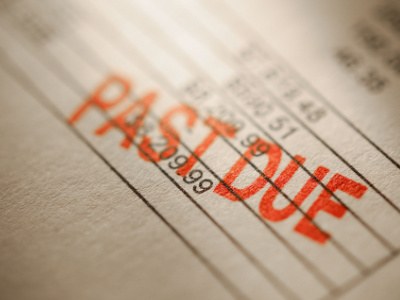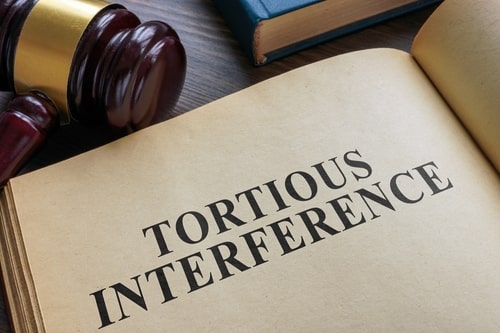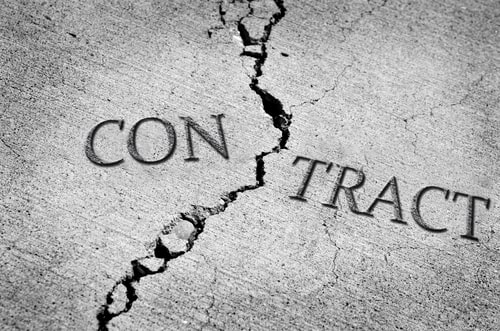Recent Blog Posts
How is Arbitration Different from Mediation?
 Alternative dispute resolution methods, such as arbitration and mediation, have gained popularity as more efficient and cost-effective alternatives to traditional litigation. Both arbitration and mediation offer different ways of resolving conflict outside the courtroom. While they share similarities, they are fundamentally different. Arbitration involves a neutral third party making a binding or non-binding decision, while mediation focuses on facilitating discussion and negotiation between parties without imposing a binding resolution. Please remember that arbitration can be binding or non-binding, depending on the situation.
Alternative dispute resolution methods, such as arbitration and mediation, have gained popularity as more efficient and cost-effective alternatives to traditional litigation. Both arbitration and mediation offer different ways of resolving conflict outside the courtroom. While they share similarities, they are fundamentally different. Arbitration involves a neutral third party making a binding or non-binding decision, while mediation focuses on facilitating discussion and negotiation between parties without imposing a binding resolution. Please remember that arbitration can be binding or non-binding, depending on the situation.
If you are interested in pursuing mediation or arbitration for a legal matter in Illinois, contact a lawyer today to better understand what each option has to offer and which option will be best for you.
What Can I Do Legally if I am Not Paid for My Professional Services?
 Imagine that you have put your expertise and time into a job, only to find out that you are not being paid as agreed upon. That can get anyone’s blood boiling. But remember that getting paid for your hard work is not just fair—it is your legal right. For the successful collection of professional fees, you need the help of an Illinois attorney with a proven track record of success to resolve your case quickly.
Imagine that you have put your expertise and time into a job, only to find out that you are not being paid as agreed upon. That can get anyone’s blood boiling. But remember that getting paid for your hard work is not just fair—it is your legal right. For the successful collection of professional fees, you need the help of an Illinois attorney with a proven track record of success to resolve your case quickly.
What Are Some Terms I Can Include in an Agreement?
Anyone from a certified tax accountant to a freelancer is considered a professional and under Illinois law, there are protections for these professionals seeking to recover fees. To limit problems it is a good idea to address these concerns in advance. When you first establish a business relationship with someone, professionals need to make sure they include terms in the payment agreement and what will happen if a client does not pay within a specified time. These terms should detail some of the following points:
Facts to Know About Commercial Tenant Eviction
 Most landlords do not want to initiate the eviction process unless they truly need to. Evictions can be expensive, and you still may not be able to collect past due rents from a tenant who has stopped paying. As a commercial landlord, you have special concerns that a residential landlord may not. Most or all of your clients are likely business entities. Members of the public are often invited into commercial buildings for business purposes, meaning that you have special concerns regarding keeping your building or unit in good repair. Evicting a business entity that has violated its lease may be as complex as evicting a resident in some cases. However, commercial tenants are not necessarily protected by the same laws that residential tenants are. For some types of lease violations, evicting the tenant and attempting to collect a past-due balance or damages may be the best way to protect your property and yourself. It is important to speak with an attorney before initiating the eviction process.
Most landlords do not want to initiate the eviction process unless they truly need to. Evictions can be expensive, and you still may not be able to collect past due rents from a tenant who has stopped paying. As a commercial landlord, you have special concerns that a residential landlord may not. Most or all of your clients are likely business entities. Members of the public are often invited into commercial buildings for business purposes, meaning that you have special concerns regarding keeping your building or unit in good repair. Evicting a business entity that has violated its lease may be as complex as evicting a resident in some cases. However, commercial tenants are not necessarily protected by the same laws that residential tenants are. For some types of lease violations, evicting the tenant and attempting to collect a past-due balance or damages may be the best way to protect your property and yourself. It is important to speak with an attorney before initiating the eviction process.
When Can Charging Orders Be Used to Enforce Judgments Against Debtors?
 As a commercial creditor, it is essential to know how to enforce judgments against debtors. One of the most effective ways to recover the money owed to a creditor is by obtaining a charging order. This legal tool allows a creditor to seize money distributed to a debtor through a limited liability company (LLC) or limited partnership (LP) until the debt is settled. Charging orders essentially serve as a lien on the income earned by a business owner or partner. It is important for creditors to understand when charging orders can be used and the benefits and limitations of this form of debt collection.
As a commercial creditor, it is essential to know how to enforce judgments against debtors. One of the most effective ways to recover the money owed to a creditor is by obtaining a charging order. This legal tool allows a creditor to seize money distributed to a debtor through a limited liability company (LLC) or limited partnership (LP) until the debt is settled. Charging orders essentially serve as a lien on the income earned by a business owner or partner. It is important for creditors to understand when charging orders can be used and the benefits and limitations of this form of debt collection.
Considerations When Using Charging Orders
A charging order is a legal order that allows a creditor to collect the money owed to them by a debtor by seizing the income stream earned through a business. The order attaches to the debtor's distributions of profits earned through an LLC or LP and directs that the debtor's interest be paid to the creditor instead of the debtor.
7 Types of Disputes That May Be Addressed Through Construction Litigation
 Companies that are involved in the construction industry may encounter a variety of disputes that require legal action to resolve. These disputes may be related to contracts, payments, defects, or multiple other issues, and if agreements between the involved parties cannot be reached, construction litigation may become necessary. This type of litigation can be very complex, and it may involve a number of different stakeholders, including property owners, contractors, subcontractors, suppliers, and insurers. By understanding the types of disputes that may be addressed through construction litigation, stakeholders can ensure that they are prepared to navigate these situations.
Companies that are involved in the construction industry may encounter a variety of disputes that require legal action to resolve. These disputes may be related to contracts, payments, defects, or multiple other issues, and if agreements between the involved parties cannot be reached, construction litigation may become necessary. This type of litigation can be very complex, and it may involve a number of different stakeholders, including property owners, contractors, subcontractors, suppliers, and insurers. By understanding the types of disputes that may be addressed through construction litigation, stakeholders can ensure that they are prepared to navigate these situations.
Common Construction Disputes
-
Delays: During construction projects, delays can occur for various reasons, including bad weather, labor shortages, poor-quality work, or unforeseen circumstances. If a delay occurs, it can have a ripple effect on the entire project, leading to financial losses for all stakeholders. Legal action may be necessary if a party fails to fulfill their contractual obligations or takes other actions that may lead to a delay in the completion of the project.
How Is Breach of Fiduciary Duty Addressed in Commercial Litigation?
 In today's competitive business environment, it is essential to have trust and confidence in the people you work with. This is particularly true for business owners, partners, shareholders, and others who rely on executives and employees to act in the best interests of a company. Unfortunately, breaches of fiduciary duty can occur, and they can result in severe financial and reputational damage to companies. In these situations, it is important for a company's stakeholders to understand how breaches of fiduciary duty may be addressed through commercial litigation.
In today's competitive business environment, it is essential to have trust and confidence in the people you work with. This is particularly true for business owners, partners, shareholders, and others who rely on executives and employees to act in the best interests of a company. Unfortunately, breaches of fiduciary duty can occur, and they can result in severe financial and reputational damage to companies. In these situations, it is important for a company's stakeholders to understand how breaches of fiduciary duty may be addressed through commercial litigation.
Understanding Fiduciary Duty
It is essential for a business's stakeholders to understand what fiduciary duties are and when these duties apply to different parties. A fiduciary relationship exists when one party (the fiduciary) has a legal obligation to act in the best interests of another party (the beneficiary). In the context of a commercial business, a company's executives, directors, and officers owe multiple types of fiduciary duties to the company and its shareholders, including the duty of loyalty, duty of care, duty of confidentiality, and duty of disclosure. These duties require fiduciaries to act with honesty, integrity, and prudence while making informed decisions, protecting confidential information, and disclosing material facts when required.
What Creditors Need to Know About Proofs of Claim in Bankruptcy Cases
 When a debtor files for bankruptcy, the court issues a notice to creditors informing them that the debtor has filed. It is important for creditors to respond properly and timely to this notice, and they will be required to file a proof of claim with the bankruptcy court. A proof of claim is a document filed by a creditor to make sure their claims are recognized, that they receive payment for those claims, and that they can be involved in the bankruptcy process. Every creditor must file a proof of claim, or they may risk not being paid during the bankruptcy proceedings.
When a debtor files for bankruptcy, the court issues a notice to creditors informing them that the debtor has filed. It is important for creditors to respond properly and timely to this notice, and they will be required to file a proof of claim with the bankruptcy court. A proof of claim is a document filed by a creditor to make sure their claims are recognized, that they receive payment for those claims, and that they can be involved in the bankruptcy process. Every creditor must file a proof of claim, or they may risk not being paid during the bankruptcy proceedings.
What Is a Proof of Claim?
A proof of claim is a form filed by creditors with the court that outlines their claims against the debtor. A proof of claim can be filed by submitting Form 410 with the bankruptcy court where the case has been filed. The form includes information about the amount of the claim, the basis of the claim, whether the debt is secured or unsecured, and identifying information for the debtor. The purpose of this document is to let the court know about the debt and ensure that the creditor can receive payments during the bankruptcy process.
What Insurers Need to Know About Surety Bond Claims
 Surety bonds are an important part of the insurance landscape. These bonds are a form of financial guarantee that serve to protect a party from the financial losses associated with another party's breach of contract. They provide a level of protection for both insurers and policyholders when disputes arise. As such, it is important for insurers to understand how surety bond claims work in order to protect their interests and those of their customers.
Surety bonds are an important part of the insurance landscape. These bonds are a form of financial guarantee that serve to protect a party from the financial losses associated with another party's breach of contract. They provide a level of protection for both insurers and policyholders when disputes arise. As such, it is important for insurers to understand how surety bond claims work in order to protect their interests and those of their customers.
What Is a Surety Bond?
A surety bond is an agreement between three parties: the principal (the person or business seeking the bond), the obligee (the person or business receiving the protection of the bond), and the company providing the bond. The agreement stipulates that if there is a breach of contract by either party, then the bonding company will be responsible for covering any damages or costs incurred as a result.
When Can Commercial Litigation Address Tortious Interference?
 It is important for business owners to understand the legal issues that they may need to address when entering into contracts or enforcing the terms of contractual agreements. In some cases, a business may need to address tortious interference. When another party attempts to interfere with a company's contractual agreements or commercial relationships, these issues may be addressed through commercial litigation. By understanding the principle of tortious interference, business owners can determine the actions they can take to protect themselves from potentially damaging situations.
It is important for business owners to understand the legal issues that they may need to address when entering into contracts or enforcing the terms of contractual agreements. In some cases, a business may need to address tortious interference. When another party attempts to interfere with a company's contractual agreements or commercial relationships, these issues may be addressed through commercial litigation. By understanding the principle of tortious interference, business owners can determine the actions they can take to protect themselves from potentially damaging situations.
What Is Tortious Interference?
Tortious interference occurs when someone intentionally interferes with an existing contract or a relationship between two parties. This type of interference may stem from false statements made about the other party; the use of threats, coercion, or intimidation; or even using bribery in an effort to manipulate a party into breaching their contract. A party who commits tortious interference could attempt to induce a breach of contract, seek to have someone commit a breach of their fiduciary duty, or obstruct the formation of a contract or relationship. In many cases, tortious interference will lead to significant financial losses for the affected parties. To successfully pursue litigation against someone for tortious interference, a business owner must prove that there was malicious intent on the part of the interfering party.
What Types of Damages Are Available in Breach of Contract Cases?
 There are numerous situations where creditors or other companies may need to address a breach of contract through commercial litigation. A breach of contract occurs when one party fails to fulfill a contractual obligation, resulting in financial losses or other damages for the other party. If a contract has been breached, the non-breaching party may pursue litigation and seek compensation or other remedies from the breaching party. Creditors who need to address issues related to breach of contract will need to understand the remedies that may be available so that they can recoup the losses they have experienced due to the breach. The remedies available for a breach of contract may include:
There are numerous situations where creditors or other companies may need to address a breach of contract through commercial litigation. A breach of contract occurs when one party fails to fulfill a contractual obligation, resulting in financial losses or other damages for the other party. If a contract has been breached, the non-breaching party may pursue litigation and seek compensation or other remedies from the breaching party. Creditors who need to address issues related to breach of contract will need to understand the remedies that may be available so that they can recoup the losses they have experienced due to the breach. The remedies available for a breach of contract may include:
Compensatory Damages
Compensatory damages are awarded to reimburse the non-breaching party for any losses incurred as a result of the breach. These losses may include lost profits, lost wages, and other monetary losses. Compensatory damages may also cover expenses related to mitigating or avoiding further losses due to the breach, such as the costs of hiring a new contractor or purchasing new materials. Compensatory damages are intended to put the non-breaching party in the position they would have been if the breach had not occurred.






